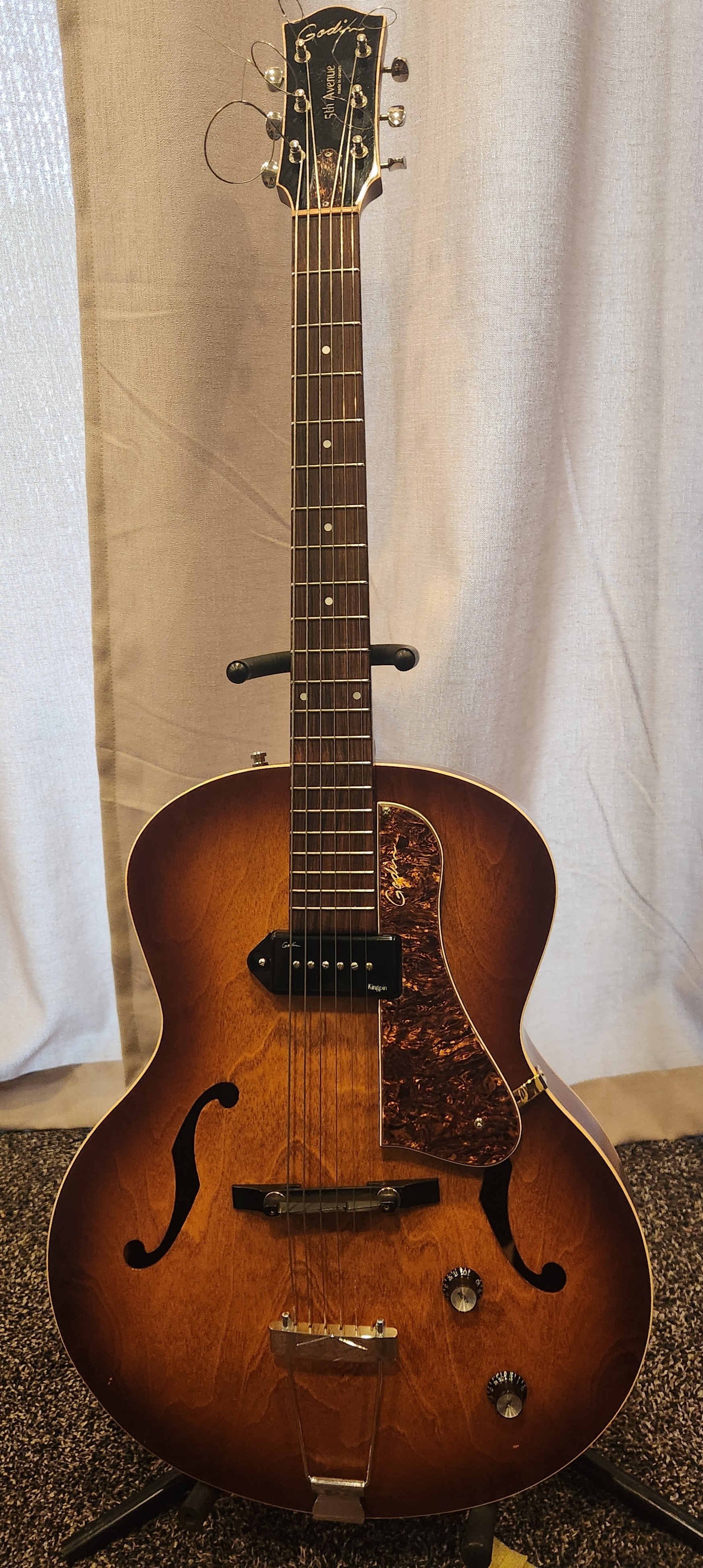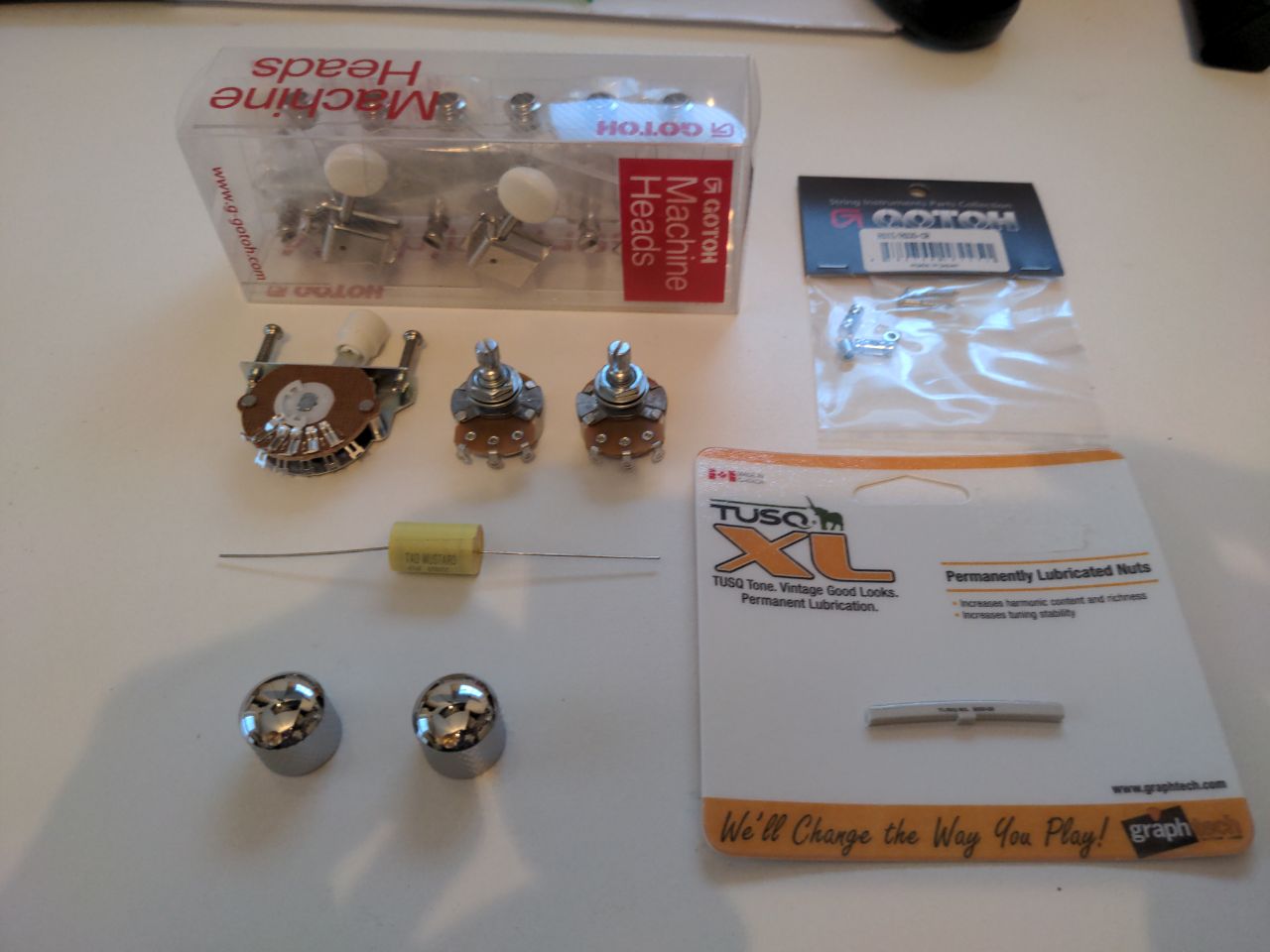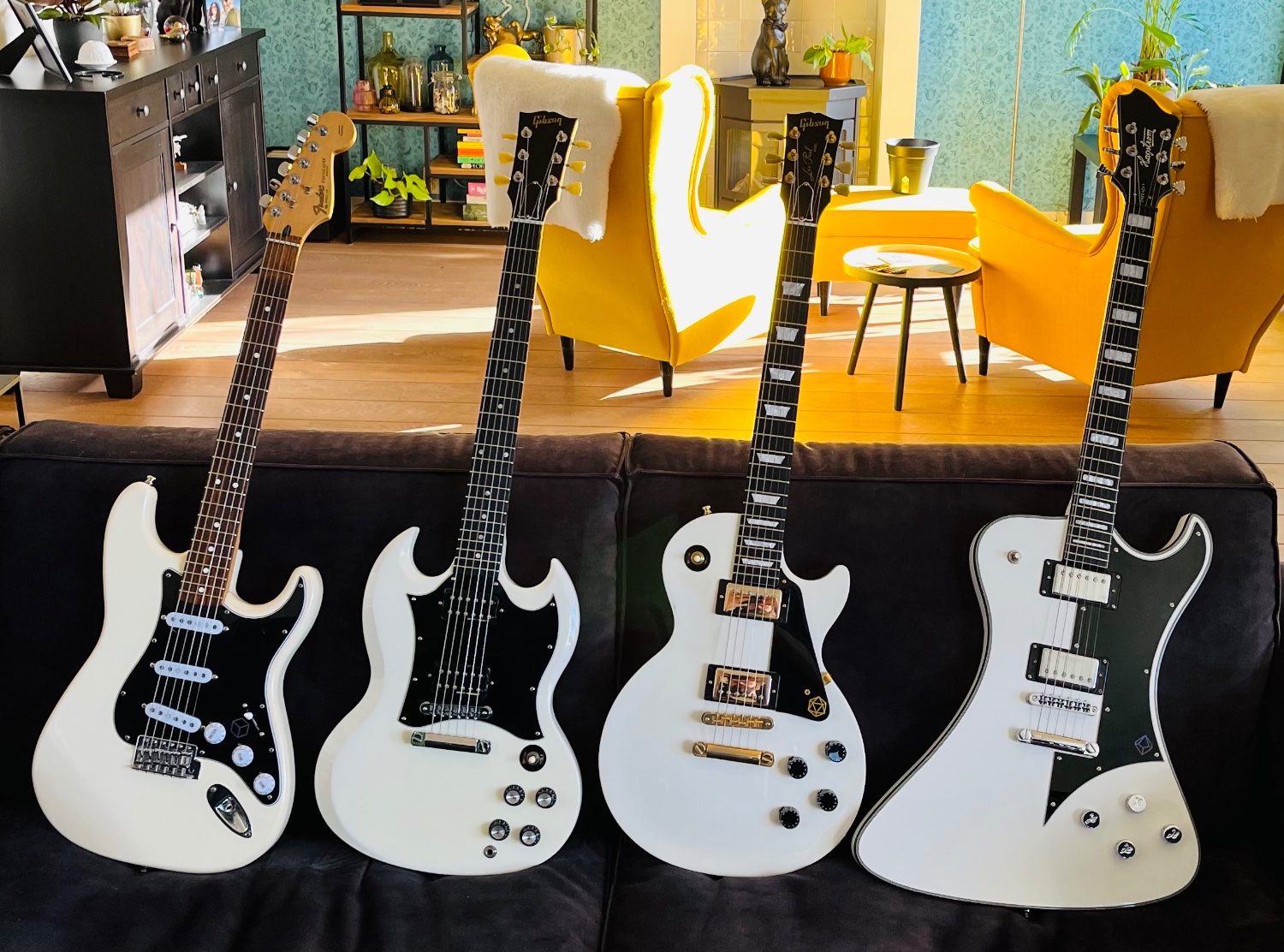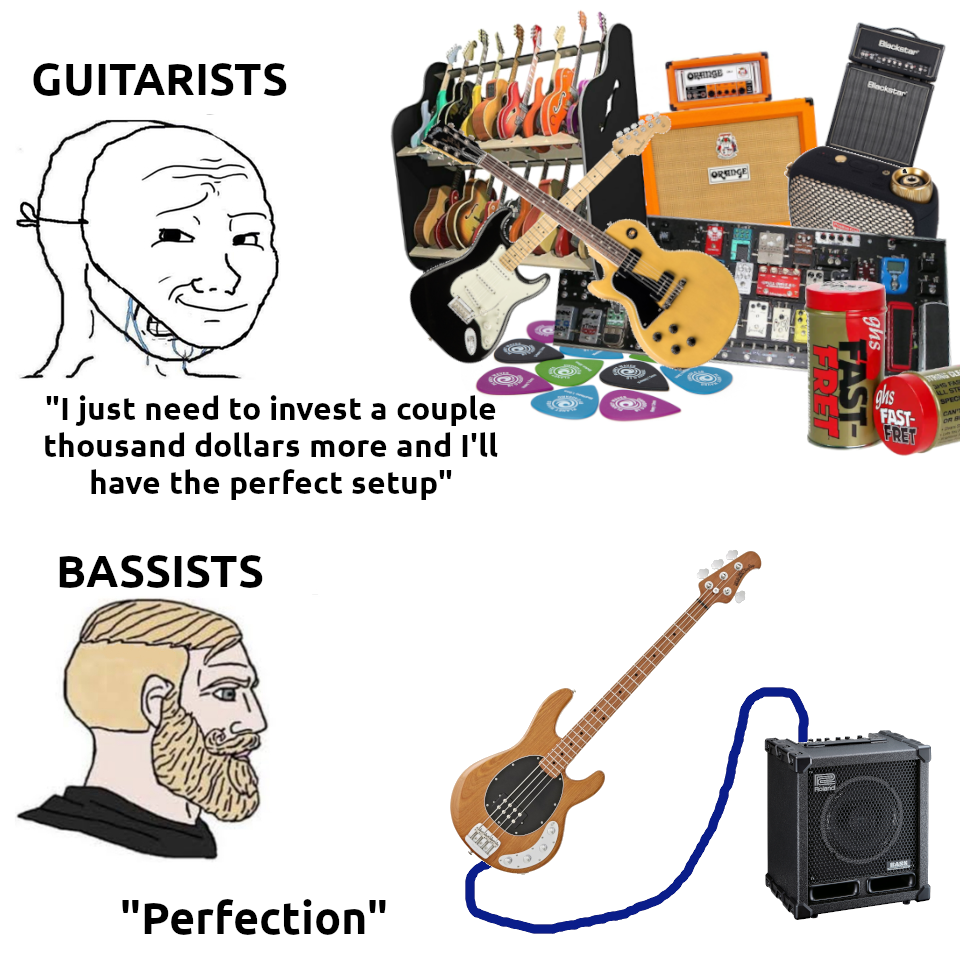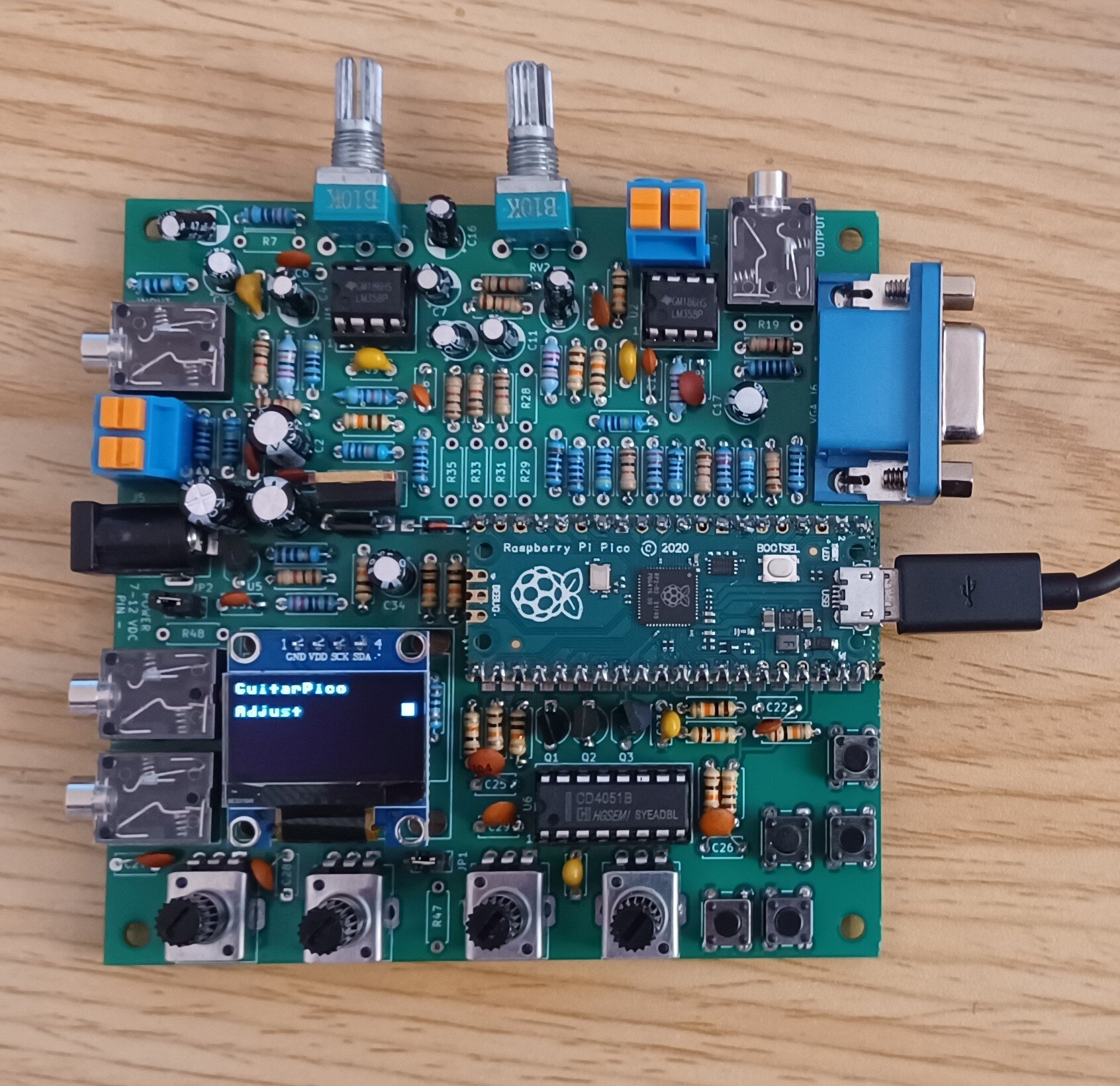Recently I built a Tele-partscaster with some spare parts I had lying around. I had some cheap Chinese-made Gotoh styled tuners from many years ago (probably bought from Guitar Fetish but I don't remember for sure). I put in those cheap tuners onto my new build just to have something there, but also hoping that they would be good enough to do the job. Unfortunately, the posts were really wobbly and several of the tuners "chattered" when I turned them (probably gunk in the gear mechanism). Since I had always been curious about the Wilkinson EZ Lok tuners, and since they are only around $30 shipped from Amazon, I decided to give them a try.
First of all, these are just licensed tuners from Trevor Wilkinson and are made in Korea. They fit the typical 10 mm holes of import necks, and are drop in replacements for standard Gotoh/Schaller styled tuning machines, so if you are replacing that kind of tuner no need to plug and redrill mounting screw holes, which is a big plus. They have a 19:1 gear ratio, which is fantastic for the price. I figured that if I didn't like the "gimmick" of the EZ Lok tuners, I would just use them as regular tuners.
The "gimmick" of these tuners is that the string post has 2 holes perpendicular to each other, one slightly higher than the other. You are supposed to pull the new string though one hole first, pull it taut, wrap it manually around the post once, then thread the string through the second hole. The theory is that this creates two "kinks" in the string and locks it in place without needing multiple winds around the post. Presumably this means increased tuning stability. The official party line appears to be that for the wound strings you are supposed to use the bottom hole first, and the unwound strings you are supposed to use the top hole first. I just used the bottom hole for all strings, since you're not supposed to have a bunch of wraps around the post anyway so I didn't think it made a huge difference. The two holes are also fairly closely spaced, which is another reason I think it probably doesn't really matter.
In case this description does not make sense, here is an old video showing how it is supposed to work:
https://www.youtube.com/watch?v=_3C7hrjXqgk
It's important to note that even though the product has "Lok" in its name, it is NOT a locking tuner in the traditional sense. These will generally not have the benefit of quick string changes that typical locking tuners provide. OTOH, they are not as heavy as locking tuners since there is no locking screw mechanism. And without a locking screw mechanism, it's one less thing to potentially break.
I will say that the quality of the tuners themselves are quite good. If you are looking to replace cheap tuners, then even without the EZ Lok gimmick these are a great value at $30. After stringing up a guitar using the EZ Lok method, I did find that it seemed to take significantly less time to get the strings settled in after stretching the strings. However, the wraps on the post are kind of ugly - they look like a rookie trying to put strings on a guitar for the first time where the wraps are uneven.
Pros: inexpensive yet good quality tuners, high gear ratio of 19:1, drop-in replacement for modern Gotoh-styled tuners with 10 mm holes. after installing new strings, strings can be tuned to pitch and "broken in" by stretching quickly. no additional mechanical parts - it's just a standard tuner with two holes instead of one. Can be strung normally if EZ Lok method not desired.
Cons: can be somewhat more complex to do string changes using EZ Lok method, so slower than typical locking tuners. string wraps around post look ugly even when done right. Not true "locking" mechanism.
overall rating: 8/10. I will be looking at using these to replace another set of cheap Chinese tuners that have poor tuning action.


